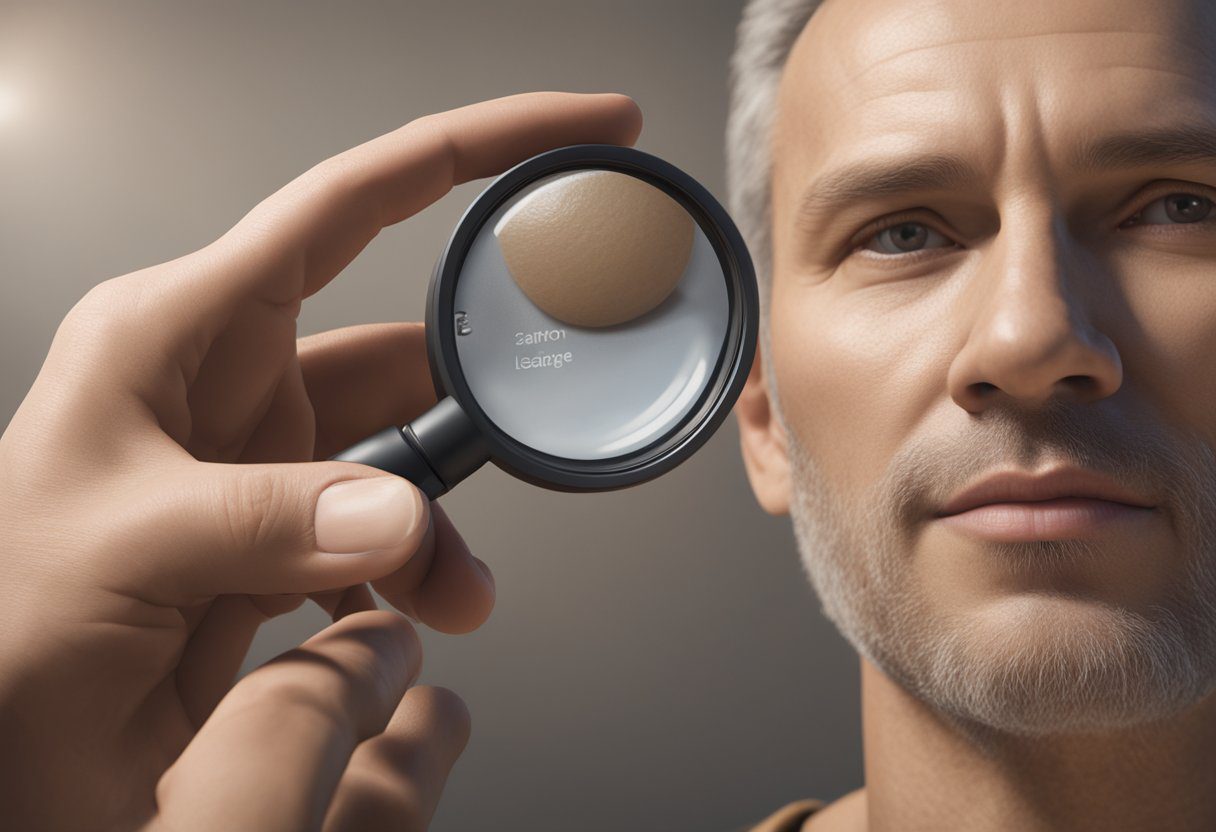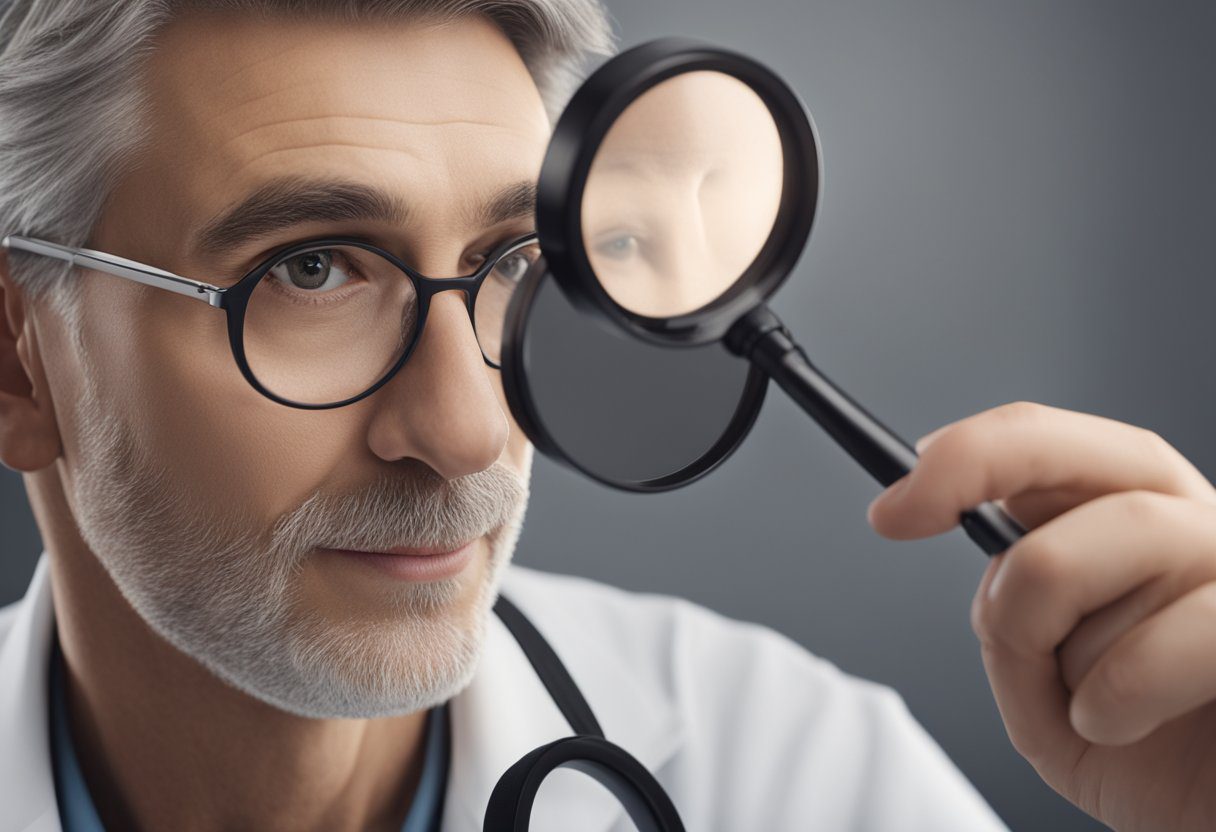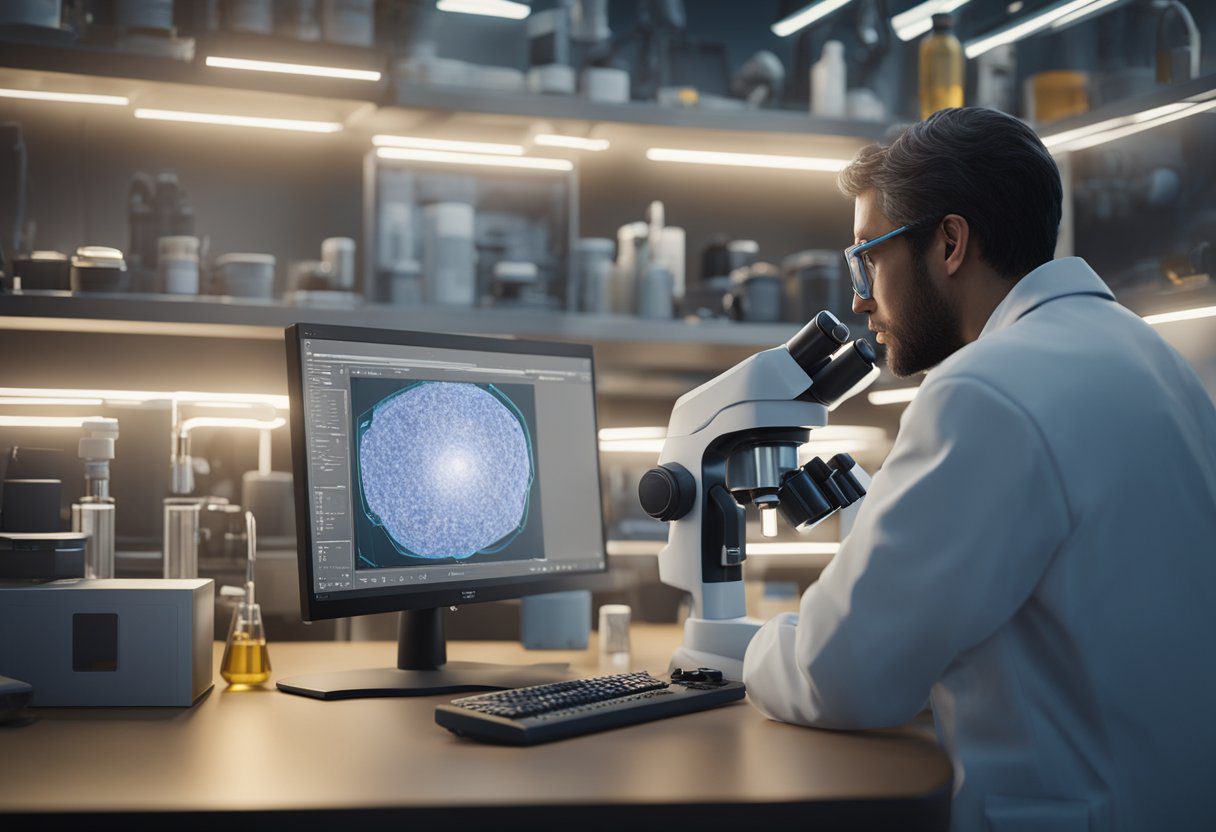Skin cancer screening is a critical process for the early detection of skin malignancies, including melanoma, basal cell carcinoma, and squamous cell carcinoma. It typically involves a visual examination of the skin by a healthcare professional, and may include the use of dermoscopy or other diagnostic tools for a more detailed assessment. Detecting skin cancer early is crucial, as it significantly increases the chances of successful treatment and can prevent the cancer from advancing to more dangerous stages. Currently, discussions about the effectiveness and implementation of nationwide skin cancer screening programs are ongoing, informed by results from different studies.

Healthcare providers recommend regular check-ups and skin examinations for individuals, particularly those at higher risk due to factors like extensive sun exposure, family history of skin cancer, or the presence of numerous or atypical moles. Self-examination is also encouraged as part of prevention strategies, with the aim of identifying any new or changing lesions that may warrant a professional evaluation. In the course of diagnosis and follow-up, biopsies can provide definitive results and guide treatment options, which may range from surgical excision to radiation therapy, depending on the type and stage of the skin cancer.
Key Takeaways
- Early detection through skin cancer screenings can increase treatment success rates.
- Regular self-examinations complement professional screenings in preventing skin cancer.
- A range of treatments is available, determined by the stage and type of skin cancer diagnosed.
Understanding Skin Cancer

Skin cancer is one of the most common forms of cancer, affecting millions each year. This section comprehensively addresses what skin cancer is, its main types, and the causes and risk factors.
Basics of Skin Cancer
Skin cancer occurs when mutations happen in the DNA of skin cells, often due to UV radiation, leading to uncontrolled cell growth. Cancer can start on the skin’s surface and may spread to other parts of the body. The National Cancer Institute classifies skin cancer as a major concern for public health due to its high prevalence.
Common Types of Skin Cancer
Skin cancers can be categorized into several types, with the most prevalent being basal cell carcinoma, squamous cell carcinoma, and melanoma.
- Basal cell carcinoma (BCC): Affects the basal cells in the skin and often resembles a flesh-colored, pearl-like bump or pinkish patch of skin.
- Squamous cell carcinoma (SCC): Arises from squamous cells and typically looks like red, scaly patches, or a fast-growing lump.
- Melanoma: The deadliest form of skin cancer, arising from pigment-producing melanocytes, which usually manifests as a mole that changes in shape, color, or size.
Risk Factors and Causes
The risk of developing skin cancer is influenced by various factors. Excessive exposure to ultraviolet (UV) radiation, fair skin, immunosuppression, exposure to certain chemicals, and a family history of skin cancer are known causes and risk elements.
- UV radiation: This is a significant risk factor for all types of skin cancer. Both natural sunlight and artificial sources like tanning beds can contribute to skin damage.
- Genetics: People with a family history of skin cancer have a higher risk, particularly for melanoma.
- Prevention: The National Cancer Institute advises that risk can be reduced through protective behaviors such as using sunscreen, wearing protective clothing, and avoiding peak sun hours.
Understanding these essential aspects of skin cancer aids in early detection and cancer prevention, which is crucial to reducing the burden of this disease.
Screening and Detection

Screening for skin cancer is a critical measure in identifying the disease at its earliest and most treatable stages. This process involves a series of exams and assessments, often by a dermatologist, and can lead to more favorable outcomes when melanoma and other skin cancers are detected early.
Benefits of Early Detection
Early detection of skin cancer greatly increases the chances of successful treatment and often reduces the risk of significant disfigurement or more serious health issues. It is especially important for individuals with a family history of melanoma to engage in regular screenings, as they may be at an increased risk.
Skin Cancer Screening Process
The skin cancer screening process typically involves a visual inspection of the skin by a dermatologist or trained healthcare provider. This can be part of a comprehensive check-up. For individuals with a family history or other risk factors, such as severe sunburns, screenings might be more frequent. The United States Preventive Services Task Force (USPSTF) provides guidelines, although it currently does not issue a universal recommendation for or against routine screening for skin cancer due to a lack of sufficient evidence.
The Role of Dermatologists in Screening
Dermatologists are vital in the screening process, as they possess specialized training in the diagnosis and detection of skin cancer. During a skin examination, they look for suspicious moles or lesions using a variety of screening exams, which might include dermoscopy or biopsy if needed. They can also educate patients on self-examinations and the importance of early detection, especially for those with increased risk.
Self-Examination and Prevention

Early detection through routine self-examination and diligent sun protection are crucial steps in preventing skin cancer. They become the first line of defense against this common yet serious condition.
Performing a Skin Self-Exam
A skin self-exam should be performed monthly, in a well-lit room with the aid of a full-length mirror. One should methodically check their entire body, including the back, scalp, soles of the feet, between the toes, and under the nails. It’s important to look for any new or suspicious spots that have changed in color, size, or shape.
- Start at the head, and work your way down
- Use hand mirrors for hard-to-see areas
- Document any changes or new spots for your health care provider
Practice Safe Sun Exposure
To practice safe sun, one needs to minimize their exposure especially during peak hours, wear protective clothing, and apply a broad-spectrum sunscreen with an SPF of 30 or higher. Remember to reapply sunscreen every two hours, or after swimming or sweating.
- Apply sunscreen 15 minutes before going outdoors
- Wear wide-brimmed hats and UV-blocking sunglasses
- Seek shade when the sun’s rays are the strongest, between 10 AM and 4 PM
When to See a Health Care Provider
An appointment with a healthcare provider is warranted if one identifies a suspicious spot that persists, grows, or changes. They can perform a professional skin exam and take appropriate action. Early professional evaluation is key in successful treatment of skin conditions, including skin cancer.
- Schedule annual skin exams with a healthcare provider
- Report any concerning changes in your skin to your provider
- Keep regular appointments and follow provider recommendations for skin health
Diagnosis and Follow-Up

Following the initial clinical assessment of a suspected skin cancer, diagnosis and follow-up involve a critical series of steps to confirm the presence of cancer and determine the appropriate treatment plan. Precision in each phase is crucial to achieving the best possible outcomes.
Biopsy and Lab Analysis
A biopsy is the primary method for diagnosing skin cancer. The procedure involves numbing the skin area with local anesthesia. Subsequently, a sample of tissue is excised for examination. There are several types of biopsies, such as shave, punch, or excisional, depending on the suspected type of skin cancer. Once the sample, known as the skin biopsy, is taken, it is sent to a lab where a pathologist will examine the cells under a microscope. This analysis aims to identify cancerous cells and understand the depth and potential spread within the tissues.
Diagnosis Confirmation Process
After the pathologist has reviewed the tissue sample from the biopsy, they provide a report detailing the findings. If cancer cells are present, the report will specify the type of skin cancer, such as basal cell carcinoma, squamous cell carcinoma, or melanoma. The thoroughness of this diagnosis confirmation process is paramount, as the accuracy of the biopsy results guides the next steps in management and treatment.
Pathology and Further Examination
Further examination may be recommended by the pathologist if the initial biopsy results are inconclusive or if additional information is needed. This can involve analyzing larger areas of tissue or seeking specialized tests. At times, patients may be referred to participate in clinical trials if standard treatments are not suitable or if advanced treatment options are being explored. The pathologist’s interpretation of the tissue architecture and cellular makeup remains at the forefront of crafting an informed follow-up plan. Regular monitoring through clinical visits and possibly additional biopsies ensures that any changes in the skin cancer are caught and addressed promptly.
Treatment Options

When it comes to skin cancer, treatment plans are determined by the cancer’s stage, location, and the patient’s health. Treatment aims to remove the cancer cells, minimize scarring, and prevent recurrence.
Treatment for Early Stage Skin Cancer
For skin cancers detected at an early stage, especially when confined to the outer layer of skin, options include:
- Excisional Surgery: The cancerous tissue and some surrounding skin are removed, often under local anesthesia.
- Mohs Surgery: A precise method where the skin is removed in layers and examined under a microscope until no cancer cells remain. This technique limits scarring and is advantageous for cancers on the scalp or face.
- Cryotherapy: Abnormal cells are frozen using liquid nitrogen, causing them to die and fall off.
Each method aims to preserve as much healthy skin as possible and reduce the risk of scarring.
Advanced Skin Cancer Therapies
When skin cancer advances beyond the early stages, treatment options may include:
- Radiation Therapy: High energy rays to destroy cancer cells, used when surgery isn’t an option.
- Chemotherapy: Systemic or topical, chemotherapy uses drugs to kill cancer cells. Topical prescriptions may treat cancers limited to the top layers of skin.
- Immunotherapy: Employs the immune system to fight cancer. It can be administered via creams or systemic treatment, depending on the cancer’s severity and location.
These treatments may be combined or followed by reconstructive surgery to restore appearance and function, especially in cases of significant tissue loss.
Post-Treatment Care and Observation
After treatment, ongoing surveillance is critical. Patients should follow up with:
- Regular Dermatology Check-Ups: To detect any new cancer as early as possible.
- Self-Exams: Patients are often educated on how to perform regular self-exams to monitor for new or recurring skin cancer.
Patients might require wound care, including bandages or ointments to promote healing and minimize scarring post-treatment. It’s important to adhere to all prescribed aftercare procedures and attend scheduled follow-up appointments to manage long-term health and prevention strategies.
Supporting Information

This section provides valuable insights into relevant skin conditions and comorbidities along with resources and educational materials that can support patients and healthcare providers in managing and understanding skin health.
Skin Conditions and Comorbidities
Patients with various skin conditions, such as acne, eczema, hair loss, psoriasis, and rosacea, often require tailored approaches to skin cancer screening. Acne-prone skin may make it difficult to distinguish between lesions, whereas eczema in adulthood and childhood eczema can obscure the skin’s surface. Types of hair loss and their associated treatments also impact skin health, making it imperative for dermatologists to differentiate between hair care matters and potential symptoms of skin disease. Moreover, psoriasis triggers and treatments must be considered during screening, as they can both mask and mimic signs of skin cancer.
Resources and Patient Education
A wealth of resources are available to patients and practitioners to aid in the understanding and management of skin health issues.
- Coronavirus Resource Center: Essential for staying informed about the impact of COVID-19 on skin health.
- A to Z Diseases: Comprehensive resource outlining a variety of skin conditions.
- A to Z Videos: Visual guides that provide clarity on skin conditions and treatments.
- Skin Care: Encompasses everyday care and skin care basics to maintain skin health.
- Insider Secrets: Expert tips that address how dermatologists treat difficult skin conditions.
- DIY Acne Treatment: Home care recommendations for those with acne-prone skin.
- Is It Really Acne?: A guide for distinguishing acne from other dermatologic conditions.
- Molluscum Contagiosum: Information on this common viral skin infection is also necessary for comprehensive patient education.
- JAK Inhibitors: Emerging treatments that may impact skin screening processes and patient care plans.
Advances in Skin Cancer Research

Recent developments in skin cancer research have led to significant improvements in both diagnosis and treatment. They encompass a wide spectrum of innovations ranging from advanced screening techniques to novel therapeutic approaches, providing promise for better patient outcomes.
Emerging Trends in Screening and Diagnosis
In the landscape of skin cancer detection, cutting-edge imaging technologies and algorithm-based assessments have elevated the precision of early diagnosis. An example of these novel technological trends is reflected in a study that presents an overview of recent advances in deep learning for skin cancer detection. These intelligent systems can analyze skin lesions with high accuracy, facilitating timely and accurate diagnoses that are crucial for improving the prognostics of skin cancer patients.
Another pivotal element within this realm is the advancement of non-invasive screening exams. Through them, clinicians can more readily detect melanoma, which is of paramount importance considering that melanoma can be treated more effectively when identified early. The Australian Skin and Skin Cancer Research Centre highlights the consensus on the momentum garnered by these technologies in influencing clinical practices.
Innovations in Skin Cancer Treatment
Treatment of skin cancer has been revolutionized by the introduction of targeted therapies and immunotherapies. The escalation of clinical trials focusing on these treatments has provided a scaffold for the development of more specialized care protocols. Therapies that harness the body’s immune system to fight cancer cells have been proven to offer substantial benefits, especially in the treatment of advanced melanoma stages, as indicated by research discussing treatment costs and benefits in Australia.
Progress in treatment is also marked by personalized medicine strategies, which consider individual genetic makeup to tailor treatments, thereby optimizing therapeutic effectiveness and minimizing adverse effects. These medical strategies are increasingly being integrated into treatment plans, representing a considerable step forward in the battle against skin cancer.
Frequently Asked Questions

This section addresses common inquiries regarding skin cancer screening, offering precise information about what to expect and the crucial signs to look out for.
What can I expect during a full body skin cancer examination?
During a full body skin cancer examination, a trained healthcare professional will visually inspect the skin for any irregularities, covering all areas including those not typically exposed to sunlight. The goal is to identify any suspicious moles or spots that could indicate skin cancer.
What are the current guidelines for skin cancer screening?
Current guidelines for skin cancer screening emphasize targeted screening in individuals with a heightened risk, although recommendations can vary depending on the health organization. Factors influencing these guidelines include personal and family history, skin type, and exposure to UV radiation.
At what age should regular skin cancer screenings begin?
Regular skin cancer screenings are typically advised for adults, particularly for those over the age of 50 or individuals with risk factors such as a history of sunburns, tanning bed use, or a family history of skin cancer. However, people with significant risk factors might need to start regular screening earlier under a doctor’s recommendation.
How is a skin cancer examination typically performed?
A skin cancer examination is generally performed by a dermatologist using a dermatoscope, a specialized tool that provides a magnified view of the skin. This allows the doctor to assess moles, freckles, and any other skin features in detail.
What are the key warning signs of skin cancer to watch for?
Key warning signs include new growths, a sore that does not heal, or changes in existing moles, such as asymmetry, irregular borders, varied colors, diameter greater than 6mm, and evolution over time. These are often remembered by the acronym ABCDE.
How can I get my skin checked for signs of cancer?
To get your skin checked, schedule an appointment with a dermatologist or healthcare provider trained in skin examinations. Some regions also offer community-based skin cancer screening programs, which might be more accessible for initial assessments.